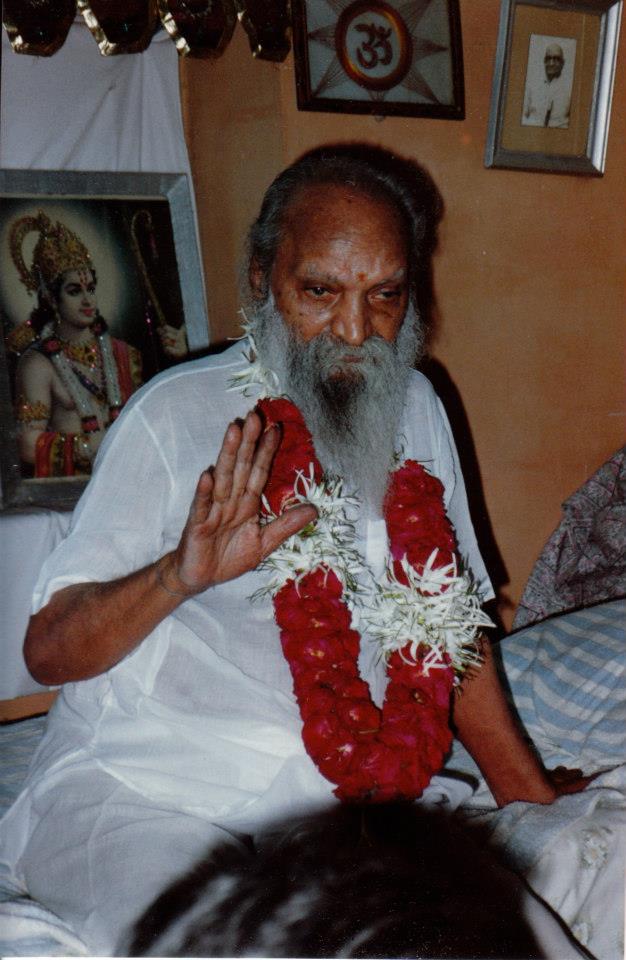Mind
Mind Your Mind: You Will Take It With You
“[Physical qualities] cannot be carried over into the next life.
The continuum of the mind, however, does carry on.
Therefore, a quality based on the mind is more enduring. …
So, through training the mind, qualities such as compassion, love, and the wisdom [of] realizing emptiness can be developed.”
~ H.H. Dalai Lama
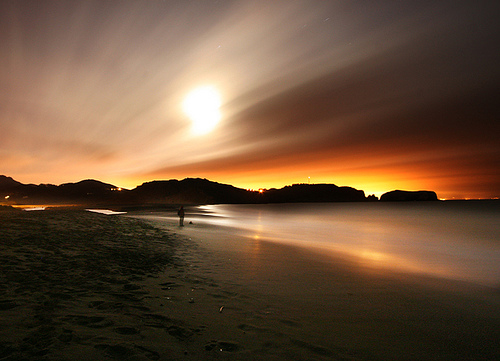
Mind Your Mind: You Will Take It With You
My friend Konrad’s beloved mother used to say:
“If I can’t take it with me, I refuse to go.”
Despite her protestations – like every other person in the history of humanity – she was obliged to leave this world without taking with her anything fiscal or physical.
But her wonderful sense of humor survived her departure.
In this phenomenal world, everything’s energy; our worldly life-forms are but gross and subtle energy vortices in a field of universal awareness.
As the Dalai Lama observes, our subtle mental forms survive the death of our dense physical forms. So when we leave our physical body, our mind persists – and we will take it with us – somewhere.
Thus it’s wise for us to prepare for future ‘mind trips’ by training and stilling our mind to cultivate compassion, love and wisdom, with a wonderful sense of humor –
NOW.
“Choice” Quotations
“We must believe in free will,
we have no choice.”
~ Isaac Bashevis Singer
“There is no such thing as chance;
and what seems to us merest accident
springs from the deepest source of destiny.”
~ Friedrich Schiller
“Since we cannot change reality,
let us change the eyes which see reality.”
~ Nikos Kazantzakis

“Choice” Quotations
“Human beings, vegetables, or cosmic dust –
we all dance to a mysterious tune,
intoned in the distance by an invisible piper.”
~ Albert Einstein
“What really interests me is whether God had any Choice in the creation of the world.”
~ Albert Einstein
“We choose our joys and sorrows long before we experience them.”
~ Kahlil Gibran
“Inflamed by greed, incensed by hate, confused by delusion, overcome by them, obsessed by mind, a man chooses for his own affliction, for others’ affliction, for the affliction of both and experiences pain and grief”
~ Buddha
“Life is the sum of all your choices.”
~ Albert Camus
“When you have to make a choice and don’t make it,
that is in itself a choice.”
~ William James
“God offers to every mind its choice between truth and repose.
Take which you please – you can never have both.”
~ Ralph Waldo Emerson
“What we call the secret of happiness is no more a secret than our willingness to choose life.”
~ Leo Buscaglia
“I can elect to change all thoughts that hurt.”
~ A Course In Miracles
“Everything can be taken away from a man but one thing:
the last of the human freedom — to choose one’s attitude in any given set of circumstances, to choose one’s own way.”
~ Viktor Frankl
“I have set before you life and death, blessing and cursing.
Therefore choose life.”
~ Deuteronomy 30:19
“Everyone should carefully observe which way his heart draws him, and then choose that way with all his strength. ”
~ Hasidic Saying
The gift of my San Francisco high-rise hermitage: a “manifestation miracle” ~ Ron’s Memoirs
“And as to me, I know nothing else but miracles.”
~ Walt Whitman
“Synchronicity is choreographed by a great, pervasive intelligence that lies at the heart of nature, and is manifest in each of us through what we call the soul.”
~ Deepak Chopra, Spontaneous Fulfillment of Desire
All things appear and disappear because of the concurrence of causes and conditions. Nothing ever exists entirely alone; everything is in relation to everything else.
~ Buddha

Ron’s view
In deciding to move to San Francisco from Chicago I was attracted by San Francisco’s climate, physical beauty and ambiance. Within its boundaries there are more than fifty hills, several islands, and significant stretches of Pacific Ocean and San Francisco Bay. So, some lucky San Franciscans enjoy wonderful views from their dwellings and working places.
When Naomi and I arrived in San Francisco in 1960, I was immediately attracted to view places, especially places with Bay and Golden Gate views. Though Naomi did not seem to share my great aesthetic appreciation of view places, our first tiny apartment was situated atop Buena Vista hill, and enjoyed a lovely Southeast panoramic city and Bay view. But we soon outgrew that apartment and rented a larger place in a more elegant neighborhood, without any view, where we resided for most of our remaining fifteen married years. But I never lost my love of view places, and ultimately rented law offices with lovely views.
Upon divorce, I moved into a one room furnished studio apartment without a view, intending later to find a larger unfurnished view apartment. My studio apartment was in a very large high-rise building with a magnificent panoramic view from its roof deck, which I sometimes enjoyed. When standing on that roof, I noticed a few corner apartments in the high-rise building across the street, with obviously wonderful views of the Bay and Golden Gate Bridge.
“The people living in those view apartments are lucky,” I thought, without imagining myself as a fortunate one of them. I remained in the studio apartment for over two years planning, but not actively trying, to move.
One morning as I left my studio apartment and was about to walk to work I met in the elevator, Mark, an upstairs neighbor and real estate lawyer. Mark offered me a ride to the financial district which at first I declined, telling him I preferred walking. But he persisted and urged me to join him – and I agreed. Whereupon he told me that before driving, he was going across the street (to 1998 Broadway) for a few minutes to register on a waiting list for an apartment rental there. And at his request, I accompanied him.
As we walked across the street, Mark told me that all apartments at 1998 Broadway were soon going to be converted from rentals to condominiums. He said he was registering to rent because tenants would be given the first option of purchasing their rented apartments, a good “investment” opportunity. Then he importuned me to also register for an apartment there.
Until this time I had been so occupied with my law practice and in adjusting to life as a single person, that I hadn’t yet looked for an unfurnished apartment. And I wasn’t then in the mood to do so. So at first I was reluctant to register for an apartment across the street before evaluating possible alternatives. But Mark explained that registering for an apartment at 1998 Broadway would not oblige me to take any apartment offered to me.
So I followed Mark’s well meaning advice and told the office manager that I too wished to be wait-listed for an apartment. She asked me whether I wished a one, two, or three bedroom apartment and if I had any other requirements. Without thinking I responded, “whatever first becomes available”.
Many months passed. I met Dhyanyogi, was fully occupied with personal and professional activities, and had almost forgotten about that apartment waiting list. Then I was surprised by a call from the 1998 Broadway building manager informing me that an apartment had become available for me.
She said she needed to rent it promptly and that she was calling me because she had been unable to contact Mark, who was ahead me on the waiting list, but out of town. I told her I’d call her back later in the day. Only after confirming that Mark was traveling abroad and was unreachable, did I tell her that I would promptly come to see the newly available apartment.
Miraculously, it was one of those few view apartments that I had noticed from the roof of my building across the street. It was apartment #1204 with two bedrooms and two baths, and the fourth best Bay and Golden Gate Bridge view in the entire 82 unit building.
On beholding the panoramic view, I immediately signed rental papers, and soon moved into apartment #1204. But, I felt concern about Mark, who was my benefactor but had missed this opportunity. However, the universe soon assuaged my concern. Shortly after Mark returned to San Francisco, he was called to rent an apartment above mine, #1404 with an even more panoramic view. I was happy that the waiting list sign-up thus turned out to be very lucky for both of us.
But renting my view apartment was only the beginning of this “manifestation miracle”. After I had been renting the apartment for about a year, Mark’s prediction of potential apartment ownership proved prescient. All tenants were notified that there were new owners of the building who intended converting it to condominiums.
Under San Francisco ordinances at that time, the new landlords were required to obtain majority tenant ratification of their conversion subdivision plans. So a tenants’ committee was organized to negotiate with the new owners. Mark and I were then the only lawyers in the building, and were asked to help with our legal skills. I agreed, but Mark was mostly busy with other matters.
After spending much time in legal research and in personally checking building records at City Hall and at the Department of Public Works, I discovered some significant “loop holes” enabling the tenants to exert much unforeseen bargaining power with the new landlords.
Ultimately, my legal work enabled the tenants’ committee to negotiate significantly reduced proposed purchase prices for those who wished to buy their apartments, plus generous bonuses for tenants who elected to move-out. I believe that aggregate value of these price reductions and move-out bonuses was about $2 million.
Tenant negotiators Alyce and Leonard Brown told me that the negotiating committee intended to accept the landlord’s latest offer, and invited me to attend their final meeting with the developer and his attorney. At the meeting, to my amazement, the committee informed the landlord that his latest offers of price reductions and move-out bonuses were acceptable, only subject to one further condition – that he pay Ron Rattner a very large specified fee for legal services rendered to the tenants.
The landlord immediately agreed to this condition, and I soon received, for legal services which I had intended as a pro bono gift to all my neighbors, what proved to be the largest legal fee of my entire professional career. That fee not only covered my condominium purchase down-payment but much of the rest of the purchase price as well.
For over thirty years the apartment has been the happiest dwelling place and best financial investment of my adult life. Moreover, in 1981, my apartment was the last place in the USA where Guruji stayed before returning to India.
His presence was another great gift, and it imbued the apartment with lasting spiritual energies and “good vibes” in addition to its wonderful view – all of which have continuously nurtured my spiritual evolution during a long and transformative life period.
So, I consider my condominium “high-rise hermitage” a synchronistic gift from the Universe and an important “manifestation miracle”, for which I remain ever grateful.
Choosing Happiness: No Arms No Legs No Worries
“The greatest discovery of any generation
is that human beings can alter their lives
by altering the attitudes of their minds.”
~ Albert Schweitzer
“Though we may not be free to choose our outer circumstances in life,
we are always free to choose our attitude and thoughts about those circumstances.”
~ Ron Rattner, Sutra Sayings
It’s not our longitude
Or our latitude,
But the elevation of our attitude,
That brings beatitude.
***
So an attitude of gratitude
Brings beatitude.
~ Ron Rattner, Sutra Sayings
“Gratitude is not only the greatest of virtues,
but the parent of all others.”
~ Cicero

Nick Vujicic is an inspiring Australian motivational speaker and Christian evangelist who was born without arms or legs. As a child, he struggled mentally and emotionally as well as physically. But eventually, with perseverance and faith in God, Nick discovered that his state of mind determined his happiness, and that we choose our state of mind.
Thereby he learned to gratefully accept his life just as it is.
He teaches his crucial insights not only with his words but mostly by his life example. Though he can’t walk physically, he metaphorically walks his talk.
Here is a powerfully inspiring four minute video in which Nick both articulates and demonstrates his fundamental teaching – that an attitude of accepting our life with faith and gratitude brings happiness.
https://www.youtube.com/watch?v=SjbX6mDnMwM
Nick Vujicik ~ No Arms No Legs No Worries
A Long But Short Guruji Satsang Story
~ Ron’s Memoirs
“Silence is the language of God,
all else is poor translation.”
~ Rumi
“We search for Him here and there,
while looking right at Him
Sitting by his side, we ask:
Oh Beloved, where is the Beloved?
Enough with such questions
Let silence take you to the core of life
All your talk is worthless
when compared with one whisper of the beloved”
~ Rumi
As explained in other memoirs chapters, during a traumatic 1976 divorce I experienced a transformative mid-life spiritual awakening. Two years later, I met a one hundred year old Hindu guru, Shri Dhyanyogi Madhusudandas, and evolved from being a secular Hebrew, to becoming a “born-again Hindu”. And thereupon I developed an ever increasing interest and curiosity about Indian spirituality and culture. After a few years, the “universe” presented me with an ideal opportunity to satisfy that curiosity.
In 1981, soon after my beloved Guruji, Dhyanyogi, had returned to India, I met Sant Keshadavadas, a devotional Indian spiritual teacher known as a singing saint. Thereafter, on learning that Sant Keshadavadas would be conducting a spiritual tour of Indian holy places, I wanted to join that tour, if it was okey with Guruji.
Guruji had always told us that it was not necessary to see other spiritual teachers, but permissible. So I succeeded in getting his approval for me to tour with Sant Keshadavadas.
Thereupon, in January and February 1982, I journeyed with Sant Keshadavadas on a wonderful spiritual pilgrimage to Japan and India. That guided tour was, and remains for me, the most important trip of my lifetime. Never before had I been in a land with such a palpably spiritual ambiance as I experienced everywhere in India.
Our tour group crossed the length and breadth of that vast country (mostly by airplane and local buses) visiting many spiritual shrines and meeting saintly beings, like Mother Teresa, Anandamayi Ma and Satya Sai Baba. And I had numerous wondrous experiences. (In other chapters I will recount some of those experiences.)
Throughout the tour I was constantly seeking to learn how I could best advance my quest for “enlightenment” – my spiritual “sadhana”. By the time that the guided tour ended in New Delhi, I was quite weary from following the intense tour schedule. But I was determined to remain in India to pay my respects to my beloved Guruji, and to receive his guidance and blessing for my “sadhana”.
With unexpected difficulty, I finally succeeded in having only one brief ‘satsang’ with Guruji. This proved much more complicated – and much more memorable – than I could have previously imagined. (Satsang is a sanskrit word meaning being with a Sat Guru or being with “highest Truth” – https://endless-satsang.com/nondual-advaita-satsang.htm)
Here is the story of what happened.
After four years of tireless efforts in the US, Guruji had become extremely debilitated and was obliged to return to India in 1980 to recuperate. After his arrival in India, his whereabouts were sometimes kept confidential so he could rest and recover without constant interruption.
Before I departed for India in January 1982, I was told that after my guided tour ended I would be able to learn Guruji’s whereabouts by calling Shri Anandi Ma’s father, Pundit Pravin Jani. And I was given his Bombay phone number.
Over a month later, just before our guided tour ended in New Delhi, I began trying to phone Pravin Jani – who was in Bombay – from my New Delhi hotel. In those days India had not yet joined the digital communication age, and surprisingly I could never get a long-distance telephone connection from Delhi to Bombay.
After repeated unsuccessful attempts, I decided to make a brief trip to Katmandu, Nepal to see Buddhist and Hindu holy places there. But, I remained determined to see Guruji. So on return to Delhi from Nepal, I again repeatedly tried calling Bombay to learn his whereabouts.
But I was still never able to get a long-distance telephone line from New Delhi to Bombay. So I had to book a flight across all of India from Delhi to Bombay, so that I could then make a local Bombay phone call to Pravin Jani. Only by so flying to Bombay was I finally able to reach him by telephone.
Whereupon he readily told me that Guruji was then staying in Godhra a small town not far from Ahmedabad, the largest city in Gujurat state. Paradoxically, my flight from Delhi to Bombay had overflown Ahmedabad long before it reached Bombay. If I had known Guruji’s whereabouts while in Delhi I would have flown directly to Ahmedabad. But that hadn’t happened.
So, it was now necessary for me to book a flight from Bombay to Ahmedabad, and to arrange ground transportation from there to Godhra.
But I then learned that the only flights to Ahmedabad had been cancelled, and that I could only get to Godhra by train. So, I needed to take an eight hour trainride from Bombay to Godhra, and learned of a departure later that day.
Thereupon, I promptly took a taxi to the Bombay central railroad station where I arrived less than an hour before the train was scheduled to leave. At the station ticket booth, I was told that no first class train compartment was available; that only non air-conditioned second class space was available for the long trip. With no other choice, I attempted to purchase a second class ticket using my American Express dollar travelers checks or credit card, which until then had been accepted everywhere I traveled in India. But they were both rejected by the train station cashier, who told me that they only accepted rupees, which I could get at a nearby American Express office in downtown Bombay.
Hurriedly, I left the train station and on the sidewalk asked the first knowledgable looking person I encountered if he could direct me to the nearby American Express office. Instead of telling me he couldn’t help me, he pleasantly and unequivocally told me where to go. I quickly followed his directions, which turned out to be completely wrong.
Frantically, I finally got proper directions which I speedily followed. Arriving at the American Express office soon after it had opened, I obtained necessary rupees from a very lackadaisical clerk and rushed back to the central station, arriving just as my train was scheduled to depart.
At the last minute I purchased a ticket and boarded the train just before its departure. Up to then my body – already quite weary from over a month of intense travel and last minute stress in getting directions to Guruji – had been running on extra adrenaline. But on boarding the train I soon realized that I needed to rest. However, that proved difficult.
The seating was not very comfortable, my compartment companions were not quiet, the sultry temperatures required that we keep windows open to outside disturbances, including noises from many interim station stops. So my first long journey on an Indian train proved very interesting, but not restful.
On disembarking at Godhra that evening I was quite travel weary but excited at the prospect of seeing Guruji again for the first time since he left my San Francisco apartment in 1980. I called the Godhra phone number given me by Pravin Jani and was courteously welcomed by one of Guruji’s hosts, a woman lawyer. I learned that Guruji was convalescing at the home of her father, a retired judge, and that I could see him for a short while at an appointed time the next morning.
That night I stayed at a Godhra guest house in a very warm room with a mosquito netted bed. Because of heat and bugs, I did not sleep soundly. But nonetheless I awakened with great excitement about my imminent satsang* with Guruji.
A few hours later I arrived at the judge’s house where Guruji was staying. There I was pleasantly greeted and told that Guruji was then in the garden, but that he would soon come in to greet me. I was brought into a lovely room with an altar and fresh cut flowers and an empty prominent throne-like seat for Guruji.
As I waited there, my ‘monkey mind’ became quite active. Despite all of my wondrous experiences during the pilgrimage tour, I was busily dialoguing with “the voice in my head” about questions for Guruji. So when Guruji came into the altar room and sat down in front of me, I was feeling far from peaceful. But I sat there quietly gazing at him, waiting for him to entertain my questions.
Though Guruji looked physically healthier than when he had been carried out of my apartment to return to India, he still looked quite fragile and much weaker than when I first met him four years earlier. But he was emanating indescribably intense ‘shakti’ life-force energy, which seemed as strong as ever. His aura was so extraordinarily powerful that it soon transformed my previously agitated state of mind. As I sat there I began harmoniously resonating with Guruji’s supernal ‘shakti’ life-force and felt more and more peace of mind.
And so “the voice in my head” stopped ‘talking’ and my previous questions for Guruji gradually seemed to melt into silent infinite awareness. But they didn’t all dissolve. So after sitting there in silence for a while, I asked Guruji a preliminary question. But he kept gazing at me without answering the question, and remained silent. Whereupon, supposing that he might not have understood me, I asked Guruji another question. But he still remained silent.
Finally, in desperation I exclaimed:
“Guruji, I’ve come halfway around the world to see you.
Please tell me what I should do for my sadhana.”
After a pregnant pause, Guruji at long last replied:
“Meditate regularly!”
We had no further dialogue. And soon I was politely informed by Guruji’s host that it was time to leave.
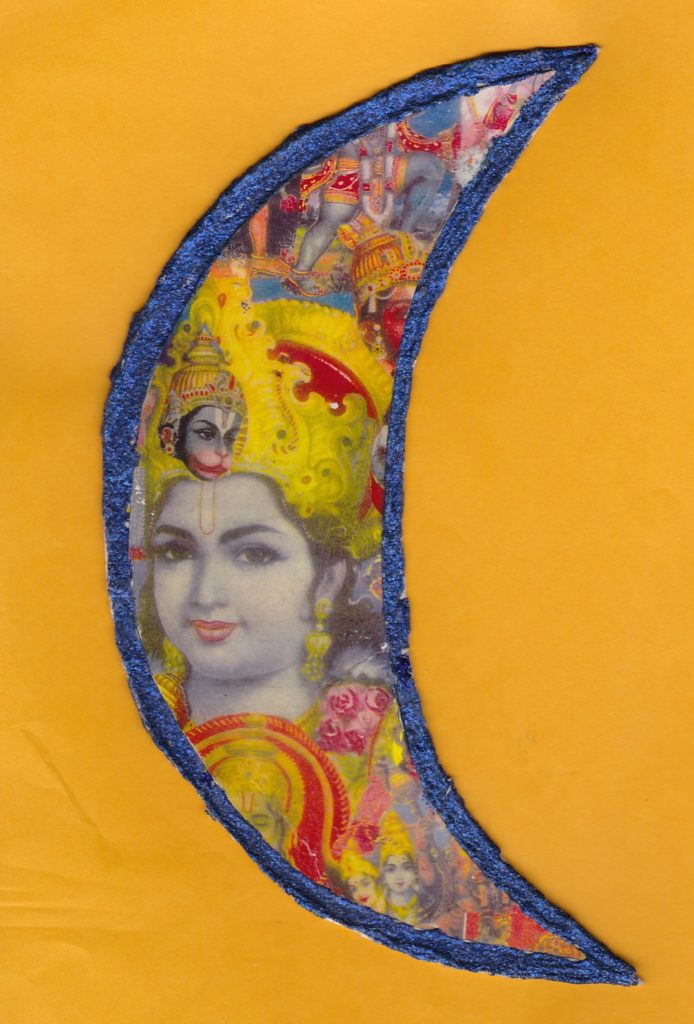
Epilogue
As you might imagine, the unforgettable memory of Guruji’s profoundly silent ‘satsang’ has remained indelibly imprinted in my heart and on my ‘mental software’. His words “Meditate regularly!” were not merely spiritual instructions, but a timeless heartfelt blessing or sankalpa that my deepest aspirations for Truth might be fulfilled through regular meditation!
Moreover, beyond words but only with deep mental silence, Guruji eloquently demonstrated that the eternal LOVE we all seek is within each of us; and he ineffably validated Rumi’s profound observation that
“Silence is the language of God,
all else is poor translation.”
~ Rumi
Since 1982 by faithfully following my beloved Guruji’s emphatic instructions and blessing for me to “meditate regularly” I’ve been learning about living with a stilled mind.
In 1996 (after Guruji’s 1994 mahasamadhi and during an extended post-retirement period of reclusion), I was inspired to compose this poem “In Silence Sweet”, which only hints at Guruji’s profound blessing bestowed in that unforgettable silent ‘satsang’.
In Silence Sweet
In silence sweet
we may retreat
from every care and woe,
and there we’ll learn in perfect peace
all we need to know.
In silence sweet
we shall meet
the thrill of ecstasy.
and thus we’ll learn in perfect peace
we’ve nothing more to be.
In silence sweet
we shall find
all we’ve ever sought.
And thus we’ll learn in perfect peace
that all our wants were naught.
In silence sweet
we shall see
that everything is light.
And thus we’ll learn in perfect peace
there’s naught to fear but fright.
In silence sweet
we shall greet
our own true Self and Soul.
And thus we’ll learn in perfect peace
we are the timeless Whole.
In silence sweet
we shall enjoy
Eternity’s repose.
For perfect peace we e’er shall be,
Peace no mortal knows.
What’s In A Name?
“What’s in a name?
That which we call a rose
By any other name would smell as sweet.”
~ William Shakespeare – Romeo and Juliet (II, ii, 1-2)
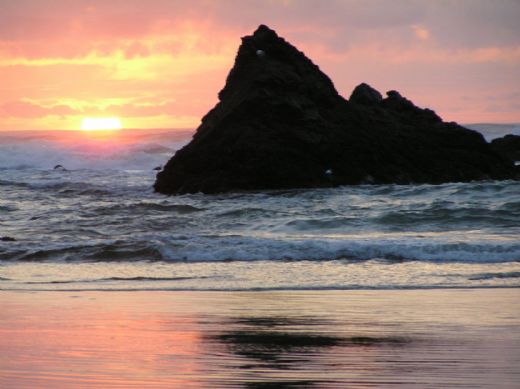
Naming is mental, not transcendental.
Naming is constraining.
Naming is then, not NOW.
Naming is mind designating, describing, and limiting:
the Indescribable,
the Illimitable,
the Infinite –
WHOLE.
Ron’s audio recitation of What’s In a Name
An Unforgettable “Sightseeing Trip” with Sri Dhyanyogi ~ Ron’s Memoirs
“ ‘Reality’ is a holographic theater of the mind.”
~ Ron Rattner, Sutra Sayings
“This world is wrought with naught but thought.”
~ Ron Rattner, Sutra Sayings
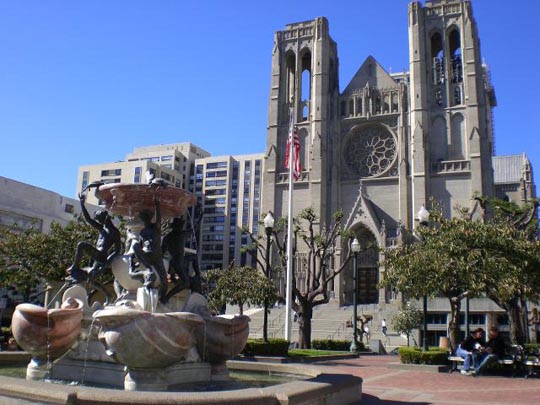
Grace Cathedral, San Francisco
In The Luckiest Day of My Life ~ Meeting My Spiritual Master, I shared with you that in 1978 I serendipitously met and and received shaktipat initiation from my spiritual master, Sri Dhyanyogi Madhusudandas; and that afterwards I was fortunate to see and be with him on various memorable occasions before he returned to India in 1980. Here I will describe the first of those meetings which was especially revelatory and memorable.
Soon after the shaktipat initiation, I received a phone call from Kusuma, then one of Guruji’s translators and cooks, who had moved to the East Bay from Bombay. Guruji was then staying with Kusuma and her family in an Oakland apartment.
She informed me: “Guruji would like to go to San Francisco to see Grace Cathedral and Saint Mary’s Cathedral”, and she asked if I would come there the next day to show him these significant shrines. Since I had no conflicting office or court appointments I readily agreed, considering it a great privilege.
At that time I owned an almost new two door Volvo sedan [with license #108-MQJ] which I had purchased on separation from my ex-wife (who kept our one family car). The Volvo had numerous problems which had caused me considerable annoyance and buyer’s remorse, and many extra trips to the Volvo dealer. I had even purchased “The Lemon Book” by Ralph Nader, and was considering a manufacturer take-back request.
The next day, in my Volvo, I arrived punctually at Kusuma’s Oakland apartment and rang the doorbell. Soon Guruji emerged accompanied by his American successor, Anandi Ma, and by Saskia, a doctor and acupuncturist from Holland.
After the women got into the back of the car, I helped Dhyanyogi into the front ‘bucket’ passenger seat, and asked him: “Guruji, can I fasten your seat belt?” To which he responded: “That won’t be necessary.”
This reply was the beginning of a very surprising and extraordinary day for me. And as an ‘up-tight’ lawyer concerned about complying with California’s seat belt law, it was the unsettling first time that anyone in my car hadn’t fastened their seat belt.
Yet, he was the Guru. So for the first time, I began driving feeling a bit “unhinged” with an unbuckled front seat passenger. Within a few minutes, I had another unprecedented, extraordinary experience.
As we arrived at the Bay Bridge toll gate plaza, I lowered the car window and grabbed three quarters to pay the 75 cent toll. I extended my open hand with the coins toward the toll taker, who reached out to receive them. But suddenly he looked at Guruji and stopped reaching. Instead of taking the quarters, he waived us on, saying: “You look like nice people. Go ahead!”
So, for the first time in my life, with an unbuckled front seat passenger, I crossed the Bay Bridge toll bridge toll free. On the San Francisco side of the bridge, I turned off the freeway and drove toward the Grace Cathedral atop Nob Hill. En route we passed the International Building, where I then had my law office on the 21st floor. So, I exclaimed spontaneously: “Guruji, my office is at the top of that building”. “Very good,” he responded. And we drove on.
Soon thereafter, I had another extraordinary and unprecedented experience. As we approached Grace Cathedral, I began my then customary inner dialogue with the “voice in my head”, thinking about where I’d park, what I’d show Guruji, what might interest him, and other similar thoughts. But as this inner dialogue was happening Dhyanyogi would regularly make some ‘casual’ comment relevant to my thoughts – as if to answer or comment on that “voice in my head”. Subtly he was letting me know that he could read my thoughts. And I soon ‘got’ that message.
Prior to that day, and following my rebirth experience, I had experienced unwitting moments of knowing thoughts of others. So, I realized that such ‘mind reading’ was possible. But this was the first time that I had ever been with someone who could read minds at will.
Guruji’s most dramatic and memorable demonstration of his clairvoyant powers that day, happened on conclusion of our sight seeing trip to San Francisco. After visiting Grace Cathedral and Saint Mary’s Cathedral, I drove us back to Oakland, parked in front of Kusuma’s apartment building, and quickly got out of the Volvo so I could open the passenger side door and help Guruji exit the car.
As I opened his door, I asked: “Can I help you Guruji?” Instead of answering that question, he said: “This is a very nice car. Would you like me to bless it?” Stunned, I replied, “Yes”. So he blessed the Volvo and got out without my help. Then I pushed forward his vacated seat and helped Anandi Ma and Saskia exit from the back seat.
On driving across the Bay Bridge back to San Francisco, I used the unspent quarters saved in my earlier crossing. Returning home, I realized that Dhyanyogi was not only able to read my thoughts as they happened in serial time, but that he apparently knew my past thoughts about the Volvo “lemon”. And I wondered if he had influenced the mind of the Bay Bridge toll taker to let us pass without paying.
The next morning, I experienced a “miraculous” epilogue to that unforgettable “sightseeing trip” with Guruji. On entering my twenty first floor office, the office was completely suffused with the ambrosial fragrance of roses. But, its windows were sealed, and there were no roses to be seen anywhere in the entire law office suite. So, how did that happen?
Soon afterwards I told Anandi Ma about the rose fragrance episode and asked if she could explain it. Smilingly she replied: “Oh, that’s Guruji’s calling card, when he makes astral visits”. Later, I had repeated experiences of rose fragrance ‘visits’ by Guruji and other living mystics. And in 1992 I experienced the scent of violets while meditating in Italy at the tomb of St. Padre Pio, who during his lifetime was known for that “miracle”, amongst others. Padre Pio’s posthumous ‘visit’ then, reminded me of the survival of our subtle bodies, after demise of the physical form.
Oh yes, there was still another amazing epilogue to that unforgettable “sight-seeing” trip. Miraculously after Guruji blessed the Volvo, I drove it for many more years before encountering another problem. “The Lemon Book” by Ralph Nader became an unnecessary possession, as I enjoyed trouble-free Volvo driving.
Spurred by that experience, I began wondering how a powerful person’s mind could so influence apparently inanimate matter. Gradually, I came to the conclusion that all forms in this “reality” are manifestations of “congealed” consciousness; that focussed mystic minds from subtle causal planes could mentally affect gross forms in denser planes with powerful thoughts. This new-found consciousness paradigm arose from continuing experiences with Guruji and other mystics, and from other inner and and outer experiences, some of which I will share with you.
A Brain Scientist’s ‘No Brainer’ NDE
“The brain does not create consciousness,
but consciousness created the brain,
the most complex physical form on earth, for its expression.”
~ Eckhart Tolle
I regard consciousness as fundamental.
I regard matter as derivative from consciousness.
We cannot get behind consciousness.
Everything that we talk about, everything that we regard as existing,
postulates consciousness.
~ Max Planck, Nobel laureate physicist, as quoted in The Observer (25 January 1931)
“The very study of the physical world leads to the conclusion that
consciousness is an ultimate reality and,
all the possible knowledge, concerning objects
can be given as its wave function”
~ Eugene Wigner, Nobel laureate physicist and co-founder of quantum mechanics
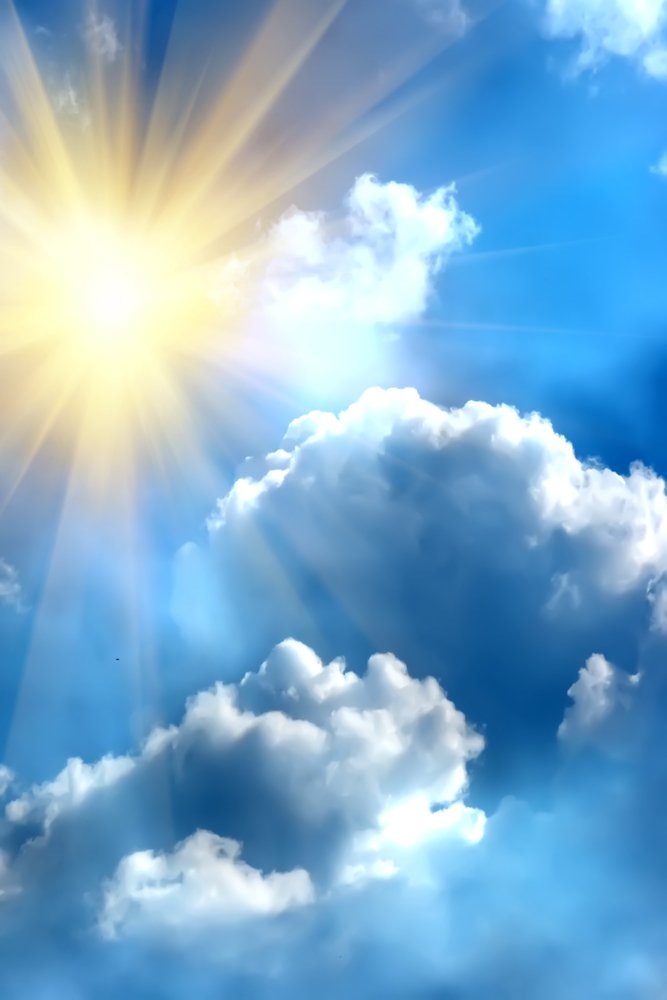
Introduction.
For millennia mystics and seers have realized experientially that our space/time/causality reality is but a play of consciousness; that all impermanent appearances, all apparent forms and phenomena – including human brains – are but holographic projections of timeless Universal Awareness.
But very few scientists have shared this revelatory mystical world view. Most scientists do not regard as “real” that which is beyond perception and conception.
Rather than recognizing consciousness as the ultimate and eternal Source of our reality, reductionistic and materialistic mainstream science says that brains generate consciousness, and that we see via our brains.
However, there have been innumerable published reports of near death and out of body experiences and other mystical experiences which contradict this mainstream brain hypothesis. (*See footnote re Near Death Experiences [NDE’s].) Nonetheless, until now most brain scientists have dismissed these reports as untrustworthy “anecdotal” evidence. Rarely have mainstream brain scientists transcended their mistaken materialistic paradigm. But there have been noteworthy exceptions. (see e.g. Atlantic Monthly: The Science of Near-Death Experiences.)
Dr. Eben Alexander
Thus, in October 2012 Dr. Eben Alexander, a neurosurgeon who has taught at Harvard Medical School, went public with an autobiographical account of a life changing dramatic and vivid near death experience (NDE) of what he called “heaven” while he was in a week-long comatose state with a non-functional brain neocortex. (His best-selling first book, ”Proof of Heaven”, was published by Simon and Schuster on October 23, 2012.)
Dr. Alexander reported being told in “heaven”:
“‘You have nothing to fear. There is nothing you can do wrong.’ The message flooded me with a vast and crazy sensation of relief.”
He has written that prior to his NDE he did not believe in such experiences, and ‘scientifically’ dismissed them.
“As a neurosurgeon, I did not believe in the phenomenon of near-death experiences. I grew up in a scientific world, the son of a neurosurgeon. I followed my father’s path and became an academic neurosurgeon, teaching at Harvard Medical School and other universities. I understand what happens to the brain when people are near death, and I had always believed there were good scientific explanations for the heavenly out-of-body journeys described by those who narrowly escaped death.”
“According to current medical understanding of the brain and mind, there is absolutely no way that I could have experienced even a dim and limited consciousness during my time in the coma, much less the hyper-vivid and completely coherent odyssey I underwent.”
“There is no scientific explanation for the fact that while my body lay in coma, my mind—my conscious, inner self—was alive and well. While the neurons of my cortex were stunned to complete inactivity by the bacteria that had attacked them, my brain-free consciousness journeyed to another, larger dimension of the universe: a dimension I’d never dreamed existed and which the old, pre-coma me would have been more than happy to explain was a simple impossibility.”
Raised as a Christian, Dr. Alexander used the religious concepts of “God” and “heaven”, to describe his extraordinary experience.
“Communicating with God is the most extraordinary experience imaginable, yet at the same time it’s the most natural one of all, because God is present in us at all times. Omniscient, omnipotent, personal-and loving us without conditions. We are connected as One through our divine link with God.”
Apart from referring to God, he also identified unconditional Love as the the ultimate Reality and “basis of everything” that exists.
“Love is, without a doubt, the basis of everything. Not some abstract, hard-to-fathom kind of love but the day-to-day kind that everyone knows-the kind of love we feel when we look at our spouse and our children, or even our animals. In its purest and most powerful form, this love is not jealous or selfish, but unconditional. This is the reality of realities, the incomprehensibly glorious truth of truths that lives and breathes at the core of everything that exists or will ever exist, and no remotely accurate understanding of who and what we are can be achieved by anyone who does not know it, and embody it in all of their actions.”
With newfound openness to “anecdotal” evidence, Dr. Alexander now expresses optimism that as science and mysticism ever more agree, humankind will evolve to wonderful new states of being.
And so may it be!
Footnote
*Near Death Experiences [NDE’s].
The term ‘Near Death Experience’ [NDE] was coined in 1975 by Raymond A. Moody, Jr., PhD, MD, in his book Life After Life which sold over thirteen million copies worldwide. Since then numerous NDE accounts have been published and discussed in mainstream media, on the internet, in films and videos, and in magazines and books. Many spiritually inspiring NDE stories have been published and researched by the International Association For Near-Death Studies [IANDS] and others. So NDE’s have become widely considered, especially by those who claim to have experienced them. And some non-materialist scientists cite NDE’s as evidence that consciousness survives physical death. For millions of people NDE’s, and other extraordinary mystical experiences, have proven to be spiritually inspirational, and transformative events, diminishing or ending fear of death and encouraging a newly open, trusting and loving lifestyle. (see e.g. Atlantic Monthly: The Science of Near-Death Experiences.)
Kalu Rinpoche, the Zen Master and the Orange
“Reality is merely an illusion, albeit a very persistent one.”
~ Albert Einstein
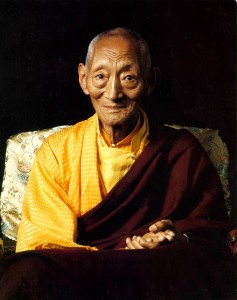
Kalu Rinpoche (1905 – May 10, 1989)
Ron’s Introductory Comments.
Is “reality” absolute or relative?
And how should the answer to that question influence our worldly ways?
Our phenomenal Universe is miraculous, marvelous, and meaningful. But it is ever changing and impermanent – a “relative reality” of space, time and causality which some mystics call illusion, samsara, or maya.
It arises and appears in an unchanging mysterious matrix of Infinite Potentiality, which some call “Absolute Reality”.
When aware or awakening to this distinction between Absolute and relative reality, we may realize that while we are apparent entities in this world, our Source and ultimate identity transcends this world; that we are ‘in this world but not of this world’.
Thus realizing the impermanence and relativity of our phenomenal reality, we may ponder on its meaning and purpose and, accordingly, on how to best behave herein: viz. what thoughts, words or deeds (if any) are most appropriate and skillful?
SillySutras.com is dedicated to raising perennial questions about how to best be in this world. Even spiritual masters and great scholars can disagree on answers to such questions.
So, ultimately, each of us must intuitively answer such questions for ourselves.
In the opening chapter of “Thoughts Without a Thinker”, concerning psychotherapy from a Buddhist perspective, author psychotherapist Mark Epstein recounts this apt anecdote about a meeting at the home of a Harvard University psychology professor of two prominent teachers of Buddha-dharma with different ideas about dharma.
“Thoughts Without a Thinker”, by Dr. Mark Epstein – Excerpt From Chapter One.
“In the early days of my interest in Buddhism and psychology, I was given a particularly vivid demonstation of how difficult it was going to be to forge an integration between the two. Some friends of mine had arranged for an encounter between two prominent visiting Buddhist teachers at the house of a Harvard University psychology professor. These were teachers from two distinctly different Buddhist traditions who had never met and whose traditions had in fact had very little contact over the past thousand years. Before the worlds of Buddhism and Western psychology could come together, the various strands of Buddhism would have to encounter one another. We were to witness the first such dialogue.
The teachers, seventy-year-old Kalu Rinpoche of Tibet, a veteran of years of solitary retreat, and the Zen master Seung Sahn, the first Korean Zen master to teach in the United States, were to test each other’s understanding of the Buddha’s teachings for the benefit of the onlooking Western students. This was to be a high form of what was being called ‘dharma’ combat (the clashing of great minds sharpened by years of study and meditation), and we were waiting with all the anticipation that such a historic encounter deserved. The two monks entered with swirling robes — maroon and yellow for the Tibetan, austere grey and black for the Korean — and were followed by retinues of younger monks and translators with shaven heads. They settled onto cushions in the familiar cross-legged positions, and the host made it clear that the younger Zen master was to begin. The Tibetan lama sat very still, fingering a wooden rosary (mala) with one hand while murmuring, “Om mani padme hum” continuously under his breath.
The Zen master, who was already gaining renown for his method of hurling questions at his students until they were forced to admit their ignorance and then bellowing, “Keep that don’t know mind!” at them, reached deep inside his robes and drew out an orange. “What is this?” he demanded of the lama. “What is this?” This was a typical opening question, and we could feel him ready to pounce on whatever response he was given.
The Tibetan sat quietly fingering his mala and made no move to respond.
“What is this?” the Zen master insisted, holding the orange up to the Tibetan’s nose.
Kalu Rinpoche bent very slowly to the Tibetan monk near to him who was serving as the translator, and they whispered back and forth for several minutes. Finally the translator addressed the room: “Rinpoche says, ‘What is the matter with him? Don’t they have oranges where he comes from?”
The dialog progressed no further.”
What is Life? – Quotes
“What is life? It is the flash of a firefly in the night.
It is the breath of a buffalo in the wintertime.
It is the little shadow which runs across the grass and loses itself in the sunset.
~ Crowfoot

What is Life? – Quotes
“Life is like an onion; you peel off layer after layer
and then you find there is nothing in it.”
~ James Gibbons Huneker
“In three words I can sum up everything I’ve learned about life.
‘It goes on.’”
~ Robert Frost
“All the art of living lies in a fine mingling of letting go and holding on. ……
To live remains an art which everyone must learn, and which no one can teach.”
~ Havelock Ellis
“In the book of life, the answers aren’t in the back.”
~ Charlie Brown
“If A equals success, then the formula is: A = X + Y + Z,
where X is work, Y is play, and Z is keep your mouth shut.
~ Albert Einstein
“Human beings, vegetables, or cosmic dust –
we all dance to a mysterious tune,
intoned in the distance by an invisible piper.”
~ Albert Einstein
“The goal of life is to make your heartbeat match the beat of the universe,
to match your nature with Nature.”
~ Joseph Campbell
“Life is a long lesson in humility.”
~ James M. Barrie
“..the powerful play goes on, and you will contribute a verse.”
~ Walt Whitman, “O Me! O Life!”, Leaves of Grass
“Life is the hyphen between matter and spirit.”
~ Augustus William Hare and Julius Charles Hare
“Life is a whim of several trillion cells to be you for a while.”
~ Author Unknown
“When we remember we are all mad,
the mysteries disappear and life stands explained.”
~ Mark Twain
